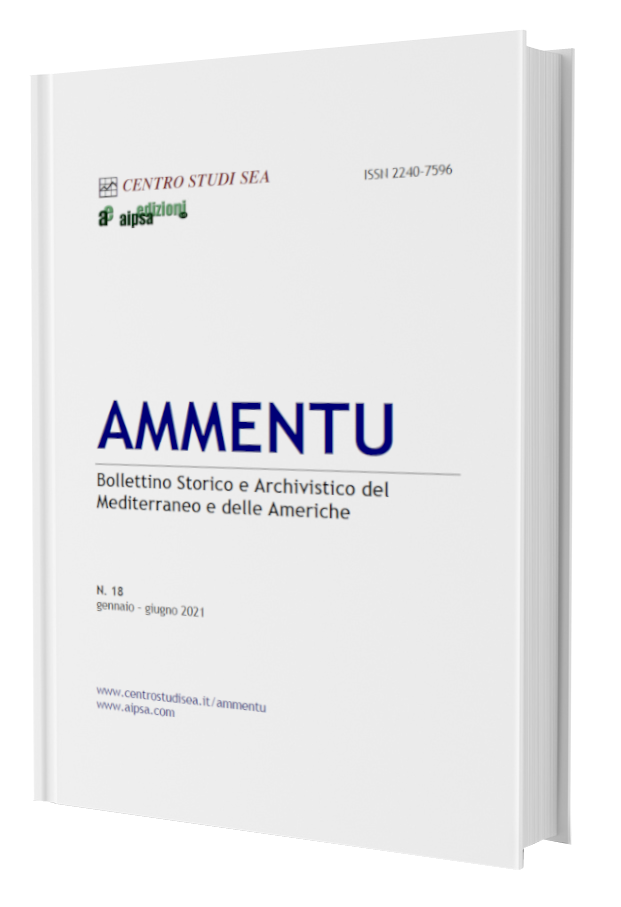The archive of the convent of Bonaria (Cagliari) of Mercede, a religious order present throughout Latin America since the 16th Century. The special bond between Bonaria and Buenos Aires
DOI:
https://doi.org/10.19248/ammentu.398Abstract
In Cagliari, at the convent of Bonaria Mercedarian Order, in the large rooms used as a library, which houses a considerable and ancient library, is also preserved the historical archive of this religious institute. Although the presence of the Biancovestiti friars followers of Saint Peter Nolasco in Cagliari has been stable at least since the beginning of the fifteenth century, the most remote chronological end of the documents preserved in the religious archive complex does not go beyond 1554. The reason for this situation lies in the same historical events that crossed the Order in Sardinia. In particular, a period of serious crisis of the religious institution was represented by that immediately after 1866, year in which the so-called subversive laws were enacted that led to the entire Kingdom of Italy to the closure of all male and female monasteries and convents. Obviously this fate did not escape even the Mercedarian cenobium of Bonaria, although he was much loved by the faithful because in the adjoining sanctuary was the object of intense veneration the beautiful and miraculous Marian simulacrum, destination of uninterrupted pilgrimage from all over Sardinia and the seafarers. In these circumstances an extraordinary role was played by a friar, Fr. Francesco Sulis, a religious of great theological and historical culture. He was in charge of the library and the archive of the Order and managed to save a large part of the library and the entire archive, consisting in particular of an important parchment from 1333, taking them with him to the archdiocesan Curia of Cagliari where he was called by the then archbishop Giovanni Balma to serve as his secretary. A year after the death of Balma, in 1882 Sulis was sent to Rome where the Mercedarian Order was reconstituted by the new master general the Chilean friar Pietro Armengaudio Valenzuela. Once again, Sulis brought the archive of the convent of Bonaria with him to the capital. In 1894 the friar died and a part of the historical archive, except the parchments, remained in Rome, was brought back to Cagliari, in the convent of Bonaria, in which thanks to the will of Valenzuela had again formed a regular religious community, formed mostly by Italian friars from the peninsula. And this part of the archive that the speakers have dedicated in recent years, ordering and inventing it. These works will be illustrated and in particular the relationship of the friars in Sardinia with their South American confreres, in particular Argentinians united by their common devotion to Our Lady of Bonaria, which gave rise to the name of the capital, Buenos Aires, of the important and vast federal state of Latin America, destination of many Italian and Sardinian emigrants in particular.
Downloads
Published
Issue
Section
License
Note on the copyright
The Copyright Notice below must be included with the journal information and in the metadata for each published article. Although every journal can freely determine the nature and scope of the copyright agreement with its authors, the Public Knowledge Project recommends the use of a Creative Commons license. For these purposes, an example is provided and may be copy and pasted in the space below for those journals that (a) offer open access, (b) offer deferred open access or (c) do not offer open access.









